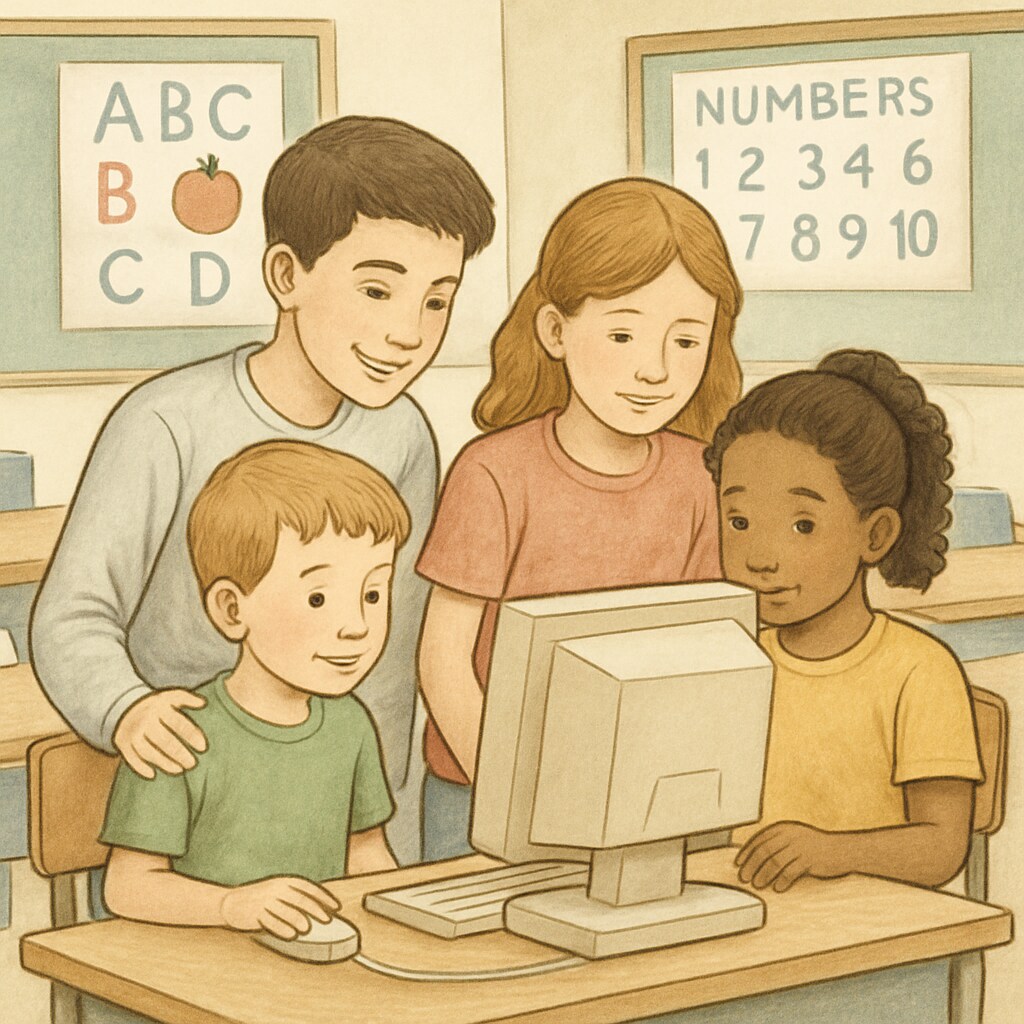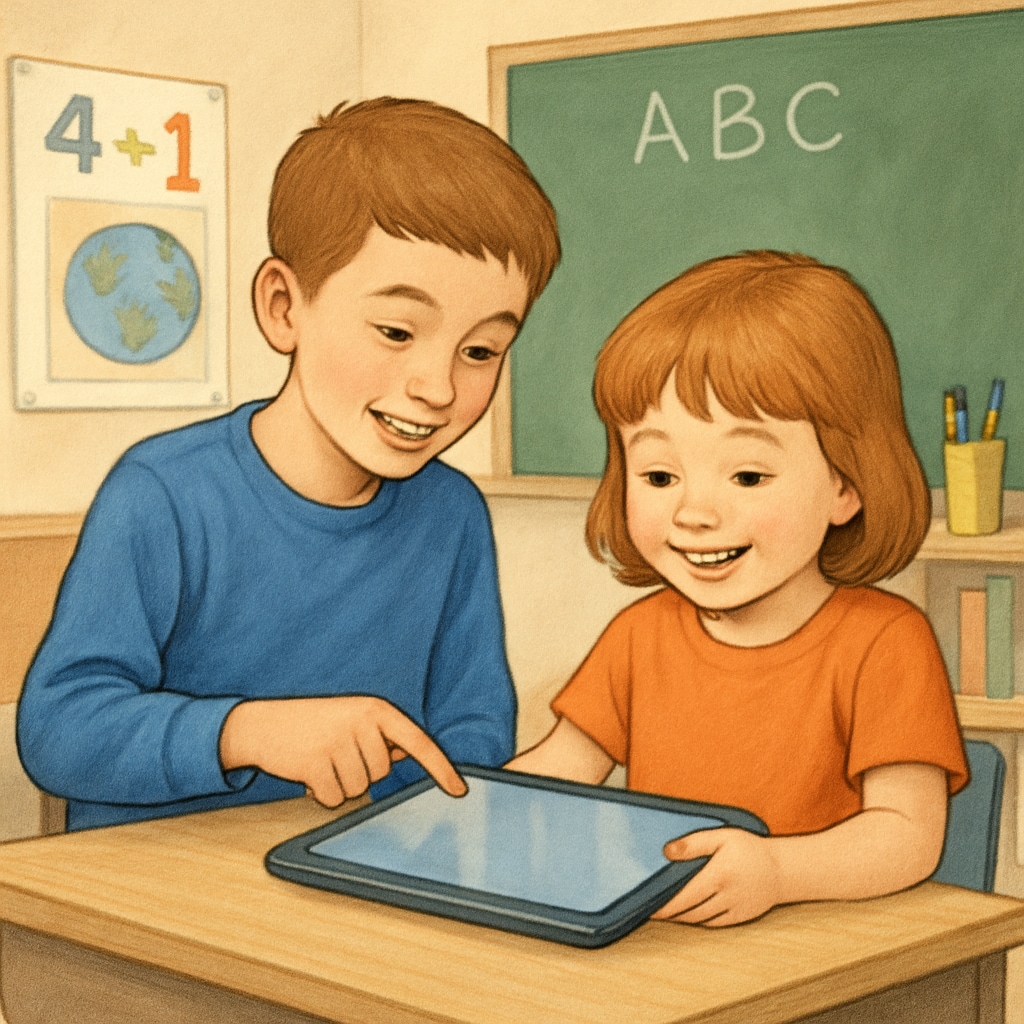Cross-grade activities provide a unique opportunity for students of different age groups to learn and grow together. By pairing kindergarteners with fourth-grade students in structured collaborative projects, educators can foster essential skills such as computer literacy, social interaction, and responsibility. These “kindergarten buddy programs” not only enhance academic learning but also build bridges between grade levels, creating a sense of community. This article explores innovative ways to design cross-grade activities that engage both age groups while promoting mutual growth and understanding.
Why Cross-Grade Activities Are Beneficial
Cross-grade collaborations bring several benefits to both younger and older students. For kindergarteners, working with fourth graders can provide exposure to more advanced concepts and role models. Older students, on the other hand, gain leadership experience and a sense of responsibility by mentoring younger peers. In addition, these programs can improve interpersonal skills for both groups as they learn to communicate effectively across age differences.
For example, activities that incorporate computer skills allow students to engage with technology in a supportive environment. Kindergarteners are introduced to basic digital tools, while fourth graders practice teaching and reinforcing their knowledge. This reciprocal learning fosters confidence and competence in both age groups.

Designing Computer-Based Activities for Kindergarten and Fourth Grade
One of the most effective ways to integrate technology into cross-grade activities is by designing computer-based projects. These activities should be tailored to the developmental levels of both groups, ensuring that tasks are engaging yet achievable. Below are some ideas for structured computer-based activities:
- Digital Storytelling: Pair students to create a short digital story. Kindergarteners can provide ideas and drawings, while fourth graders help type the text and use simple software to compile the story.
- Interactive Games: Use educational websites or apps that offer collaborative games. For example, younger students can identify shapes or letters, while older students assist with navigation and explanation.
- Basic Coding: Introduce platforms like ScratchJr, where kindergarteners can choose characters and actions, and fourth graders can help with more advanced coding sequences.
Such activities not only develop computer skills but also encourage teamwork and creativity. Teachers should provide clear instructions and ensure that the technology used is age-appropriate and user-friendly.
Incorporating Social and Emotional Learning (SEL)
Cross-grade activities offer a natural context for social and emotional learning (SEL). By working together, students practice empathy, patience, and active listening. Teachers can incorporate SEL objectives by encouraging older students to mentor with kindness and younger students to express their thoughts and needs confidently. Simple practices such as reflective discussions at the end of each session can reinforce these lessons.
For example:
- After completing a joint project, students can share what they enjoyed most and what they learned from their partner.
- Encourage fourth graders to reflect on how they helped their kindergarten buddies and what they learned about teaching.
- Kindergarteners can practice gratitude by thanking their older partners for their support.

Tips for Successful Implementation
To ensure the success of cross-grade activities, educators should follow these best practices:
- Set Clear Goals: Define the objectives of each activity, whether it’s skill development, social interaction, or community building.
- Pair Students Thoughtfully: Match students based on their personalities and strengths to create balanced partnerships.
- Provide Training: Offer guidance to fourth graders on how to mentor effectively, including tips on patience and communication.
- Monitor Progress: Supervise activities to ensure that both groups are engaged and benefiting from the collaboration.
- Celebrate Achievements: Conclude projects with a presentation or celebration to recognize the efforts of all participants.
By planning carefully and facilitating thoughtfully, educators can create a positive and enriching experience for both kindergarteners and fourth graders.
In conclusion, cross-grade activities are a powerful tool for fostering academic and social growth. By focusing on shared goals such as computer literacy and social development, these programs create meaningful connections and lifelong skills. Whether through digital storytelling, interactive games, or SEL practices, the possibilities for collaborative learning are endless.
Readability guidance: This article uses short paragraphs, lists, and clear transitions to ensure readability. The active voice is prioritized, and over 30% of sentences include transition words for smooth flow. Images are strategically placed to enhance understanding of the content.


